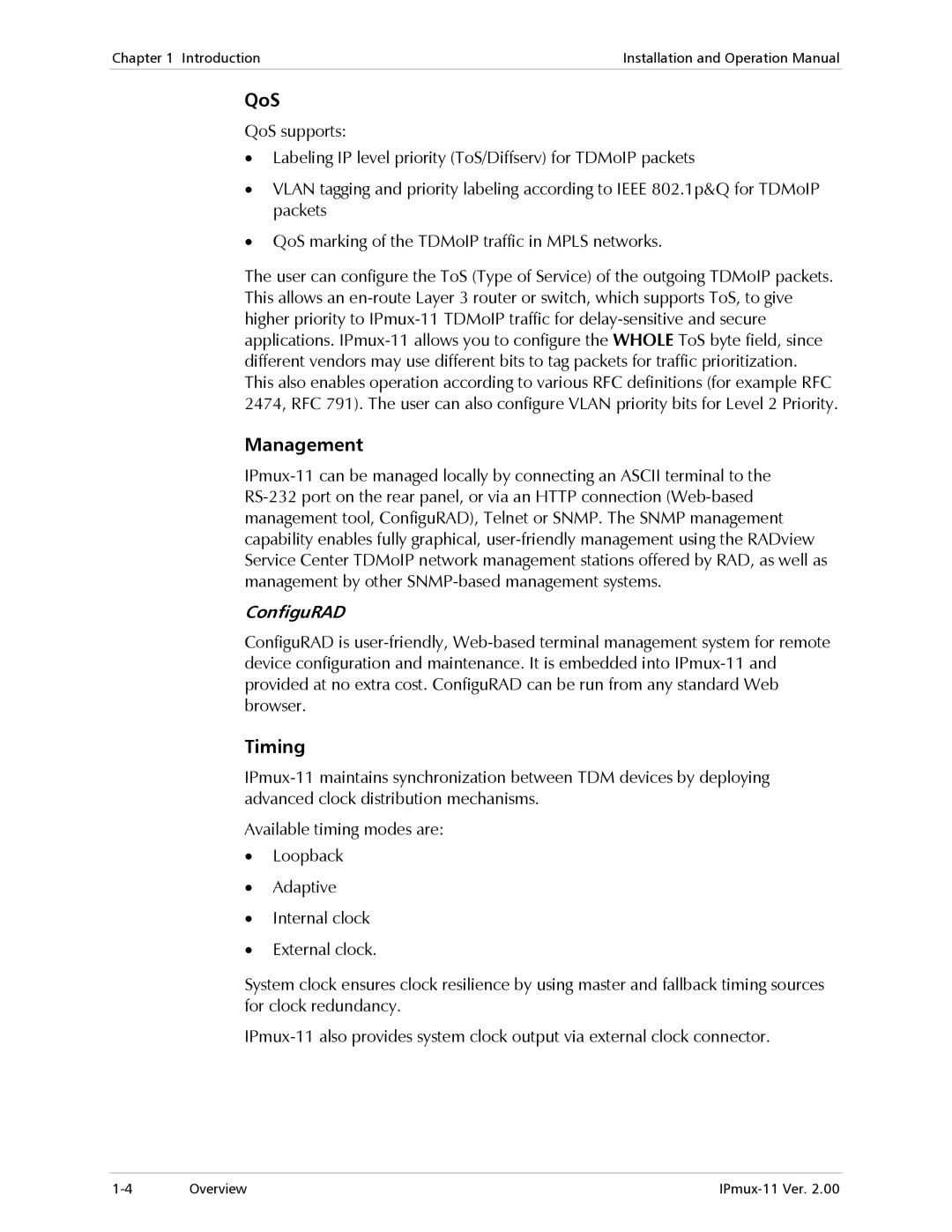Chapter 1 Introduction | Installation and Operation Manual |
|
|
QoS
QoS supports:
•Labeling IP level priority (ToS/Diffserv) for TDMoIP packets
•VLAN tagging and priority labeling according to IEEE 802.1p&Q for TDMoIP packets
•QoS marking of the TDMoIP traffic in MPLS networks.
The user can configure the ToS (Type of Service) of the outgoing TDMoIP packets. This allows an
Management
ConfiguRAD
ConfiguRAD is
Timing
Available timing modes are:
•Loopback
•Adaptive
•Internal clock
•External clock.
System clock ensures clock resilience by using master and fallback timing sources for clock redundancy.
Overview |
